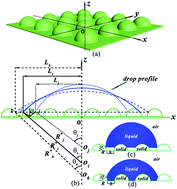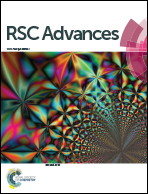Optimal design of superhydrophobic surfaces using a semicircular protrusion microtexture
Abstract
Superhydrophobic surfaces have shown promising applications in self-cleaning, anti-dust or icing, and anti-friction or wear. To fabricate such surfaces and achieve the best superhydrophobicity, the criterion to design surface geometry has been proposed. In this article, based on the thermodynamic analysis, the effects of chemistry (intrinsic CAs) and all the geometrical parameters for the semicircular microtexture on free energy (FE) and free energy barrier (FEB) as well as equilibrium contact angle (ECA) and contact angle hysteresis (CAH) have been theoretically investigated. It is demonstrated that semicircular base radius and intrinsic CA play a significant important role in ECA and CAH; in particular, a critical intrinsic CA and semicircle radius for the semicircular microtexture are necessary for the transition from non-composite to composite states. Furthermore, it is revealed that semicircle base spacing affects superhydrophobic behavior. Moreover, it is revealed that the effect of outer vibrational energy on wetting behavior depends strongly on the surface texture and chemistry (intrinsic CAs). Based on the above effects, a criterion for the transition from non-composite to composite wetting states can be further obtained.


 Please wait while we load your content...
Please wait while we load your content...